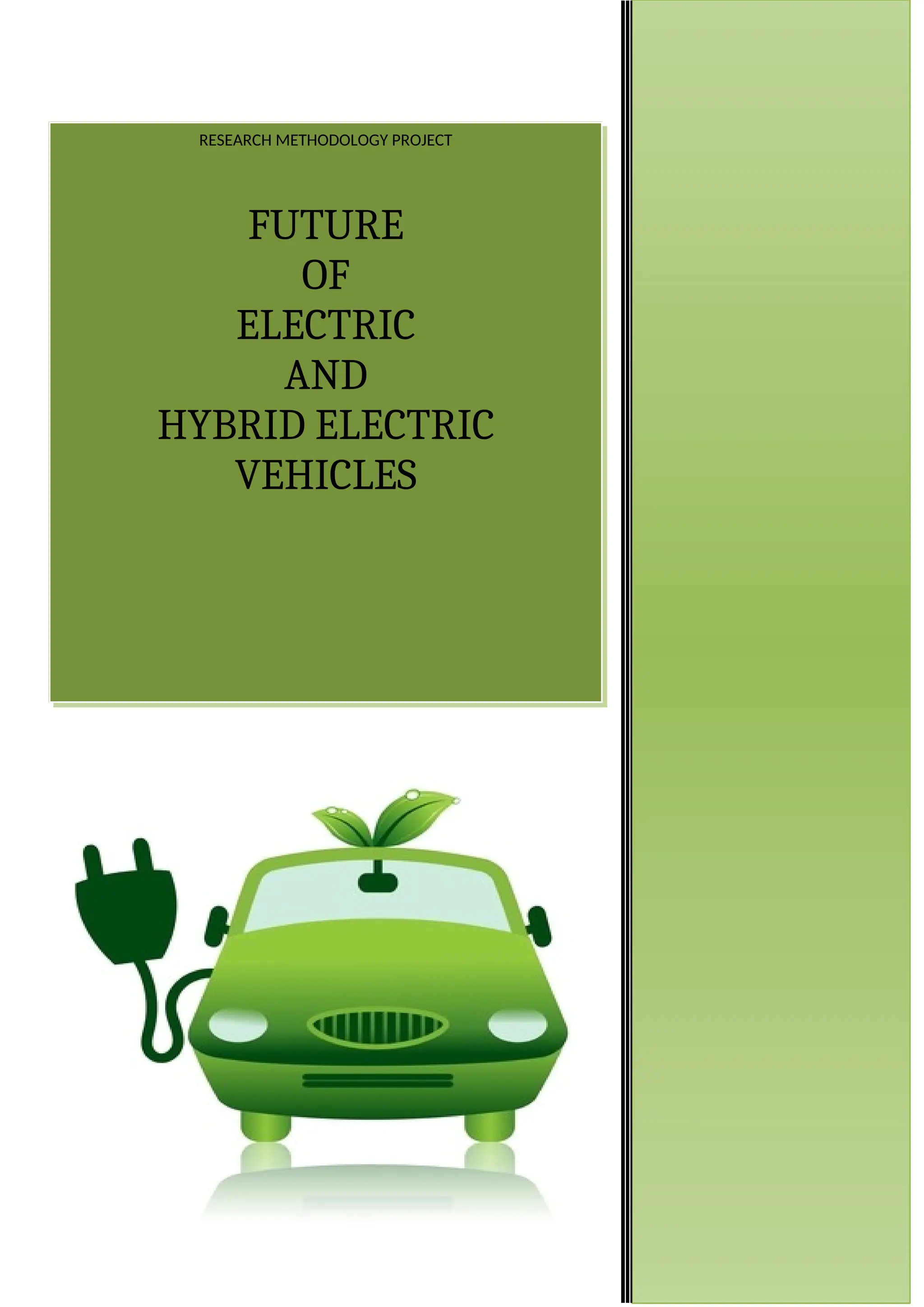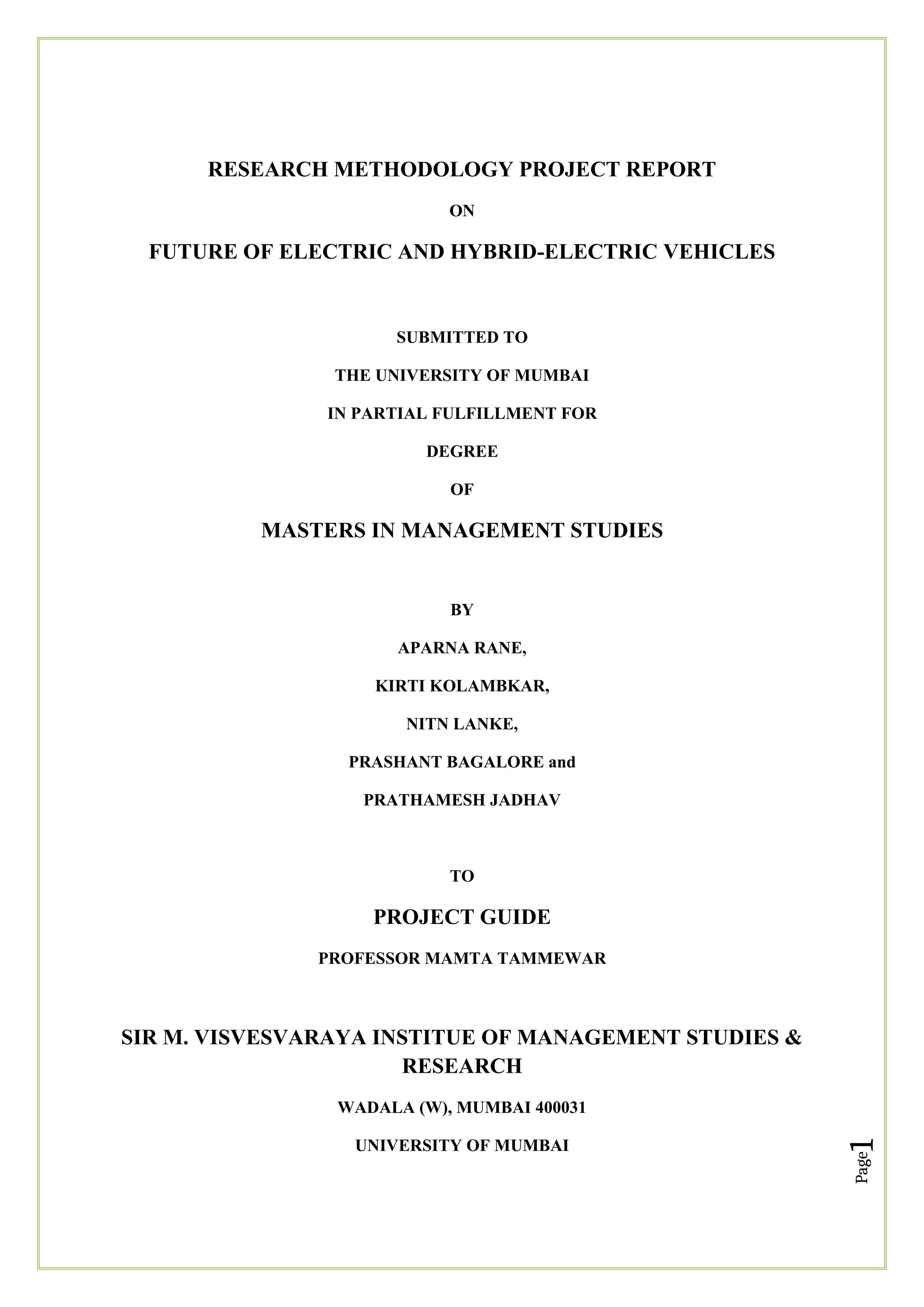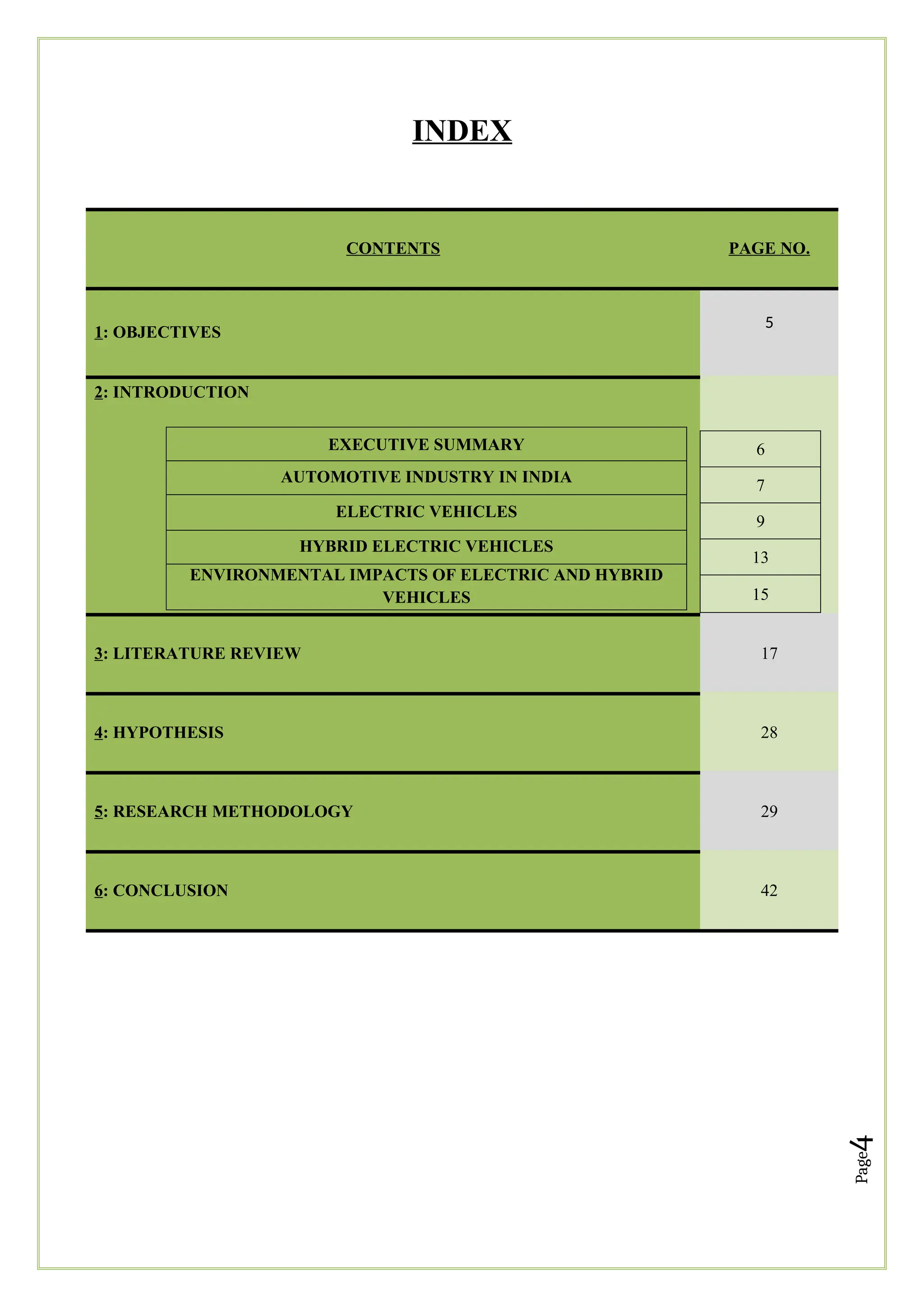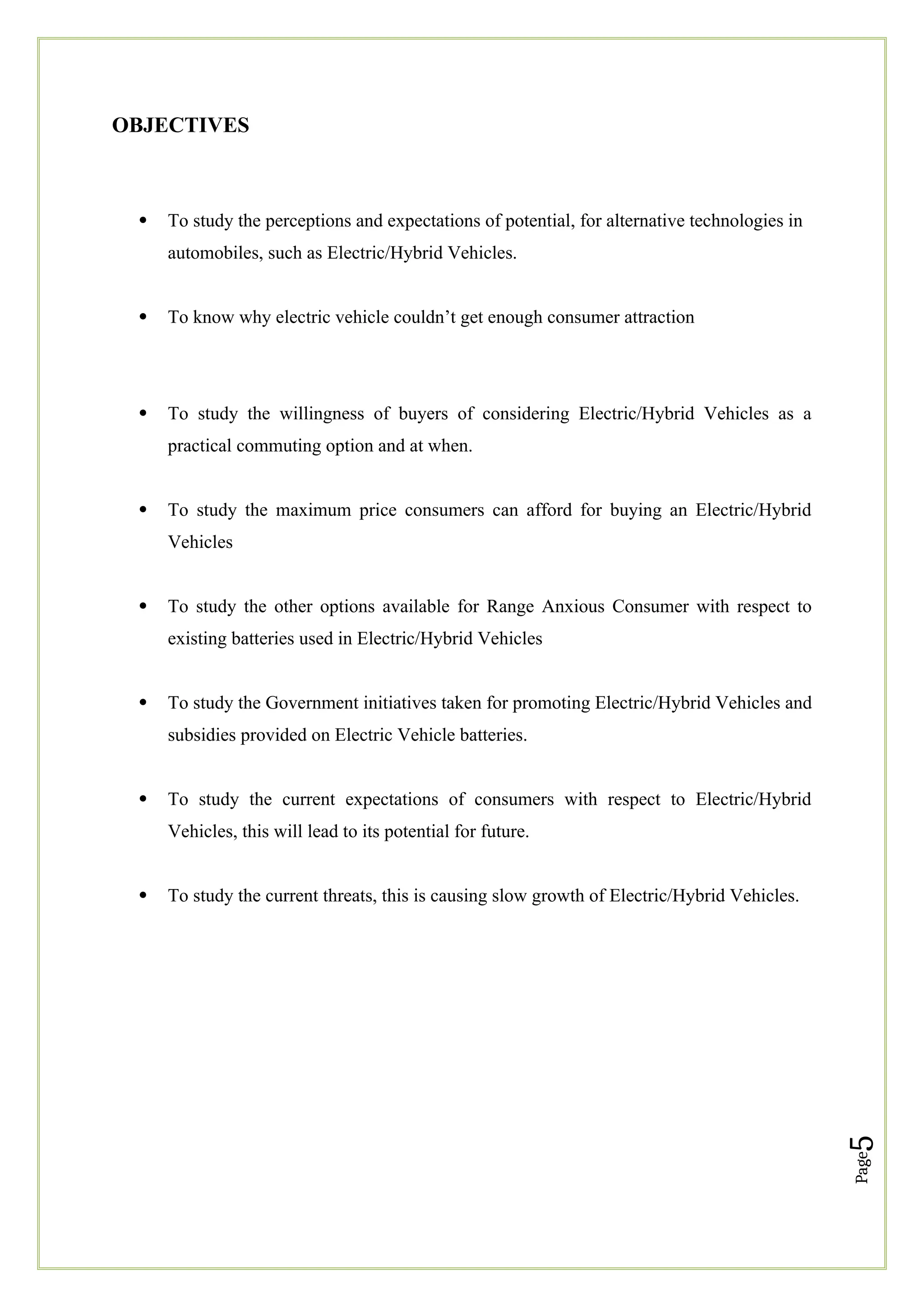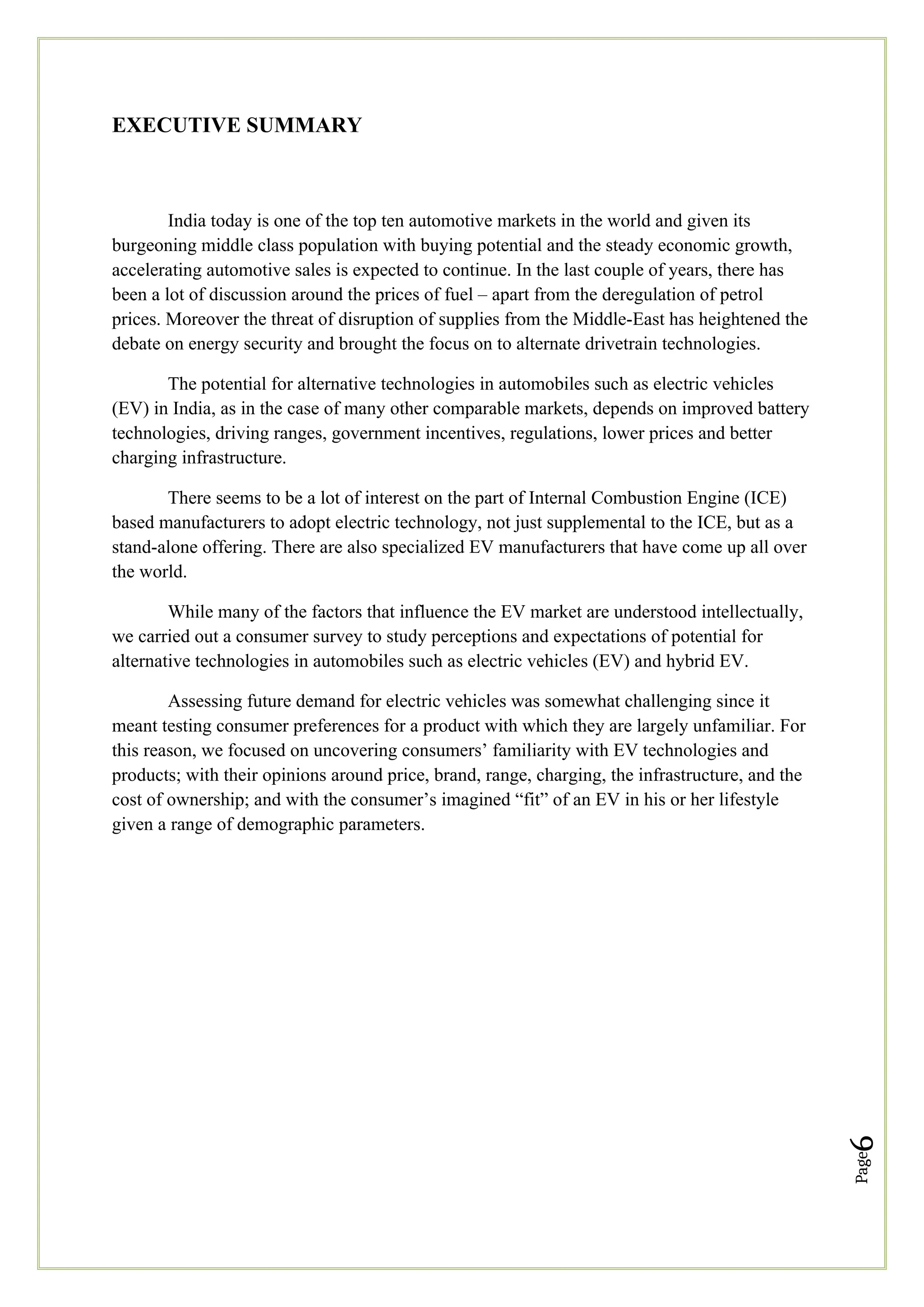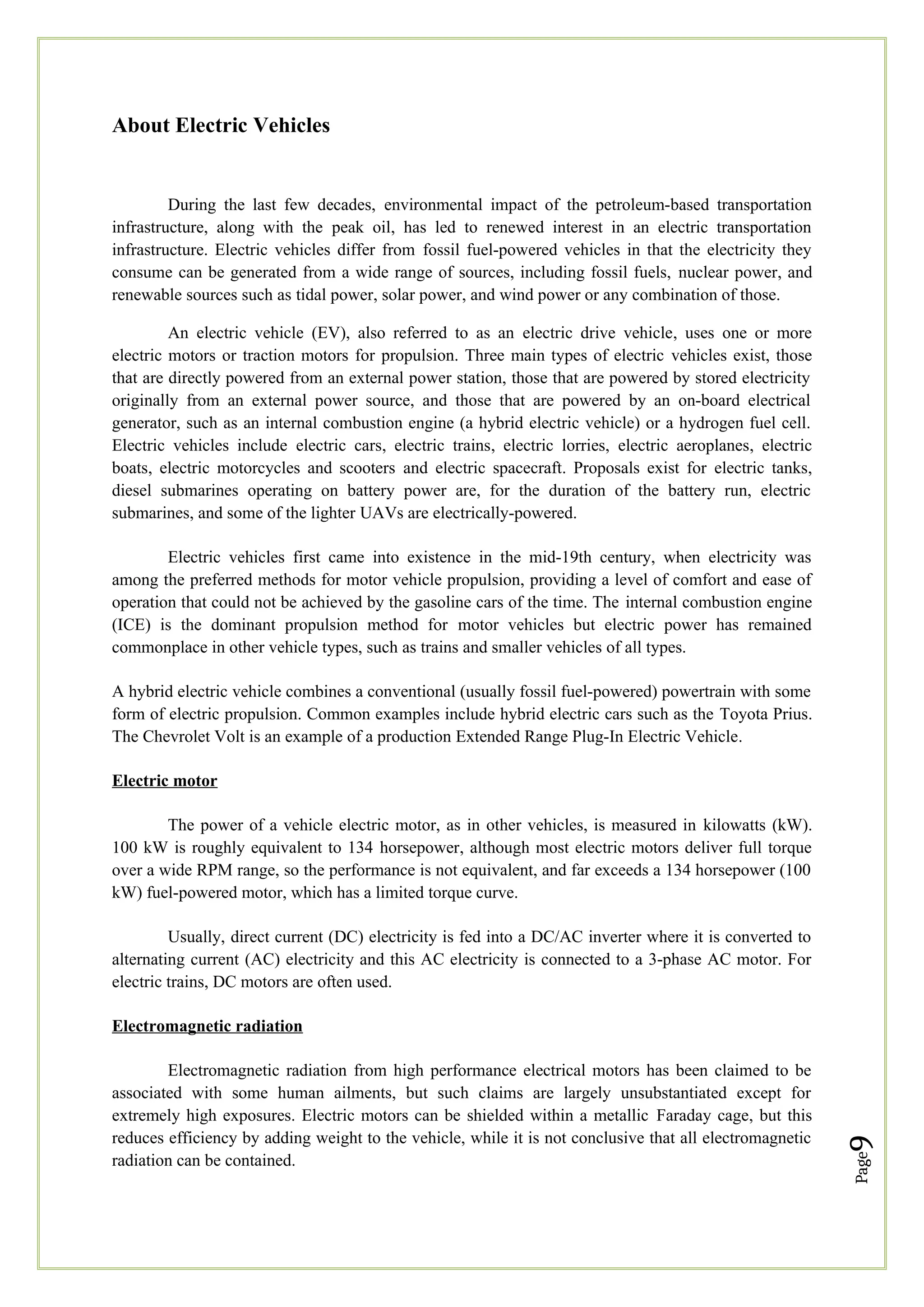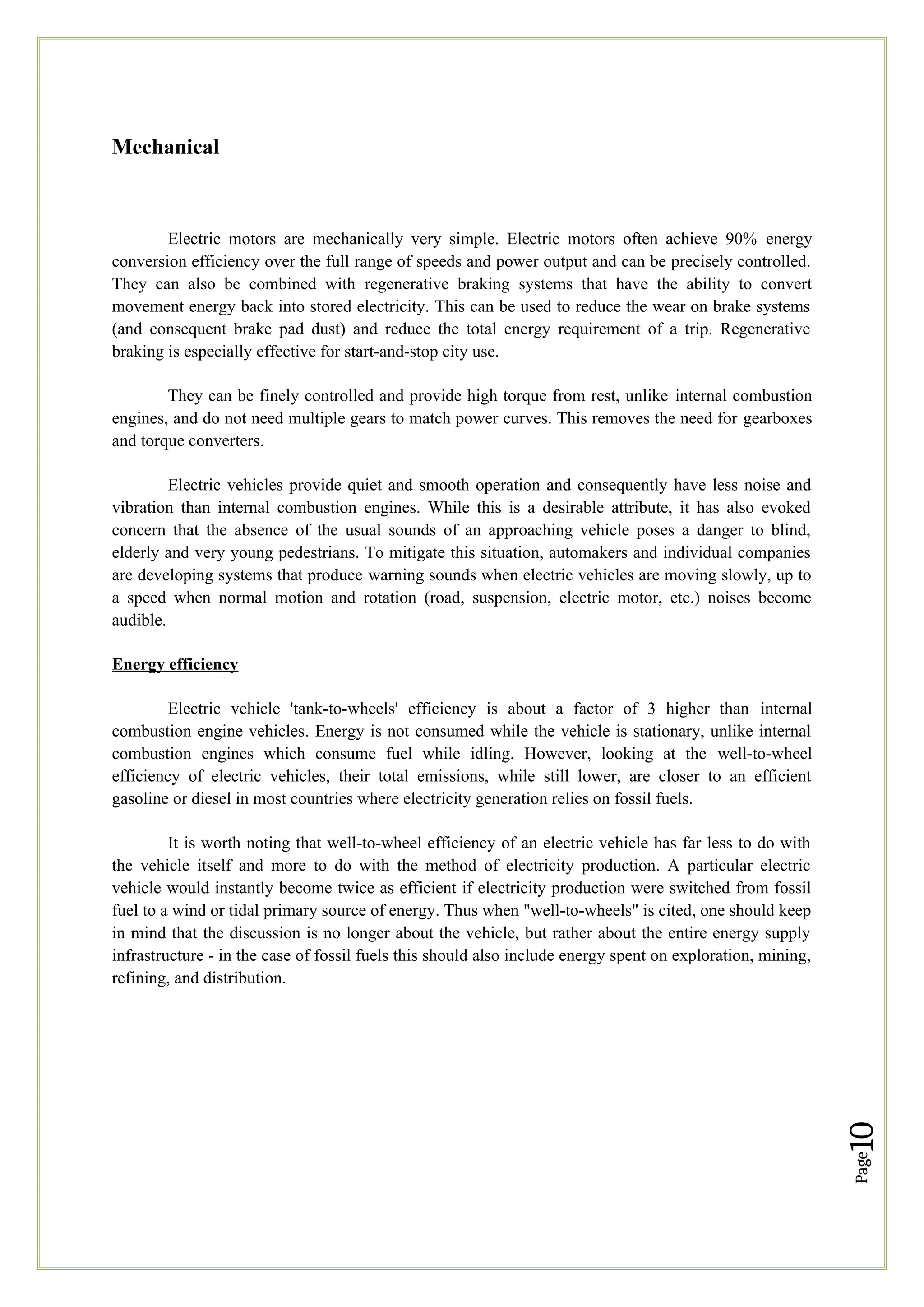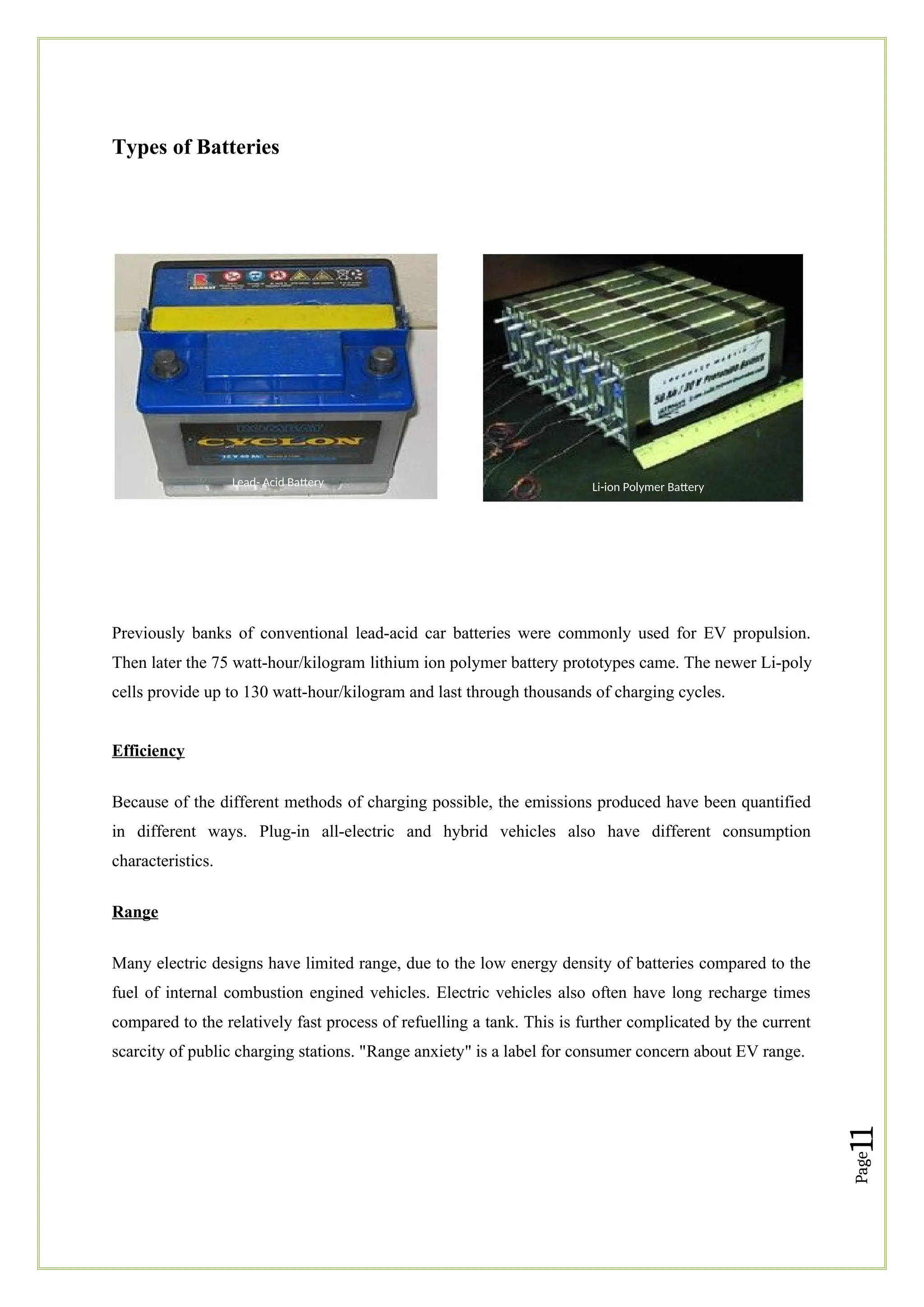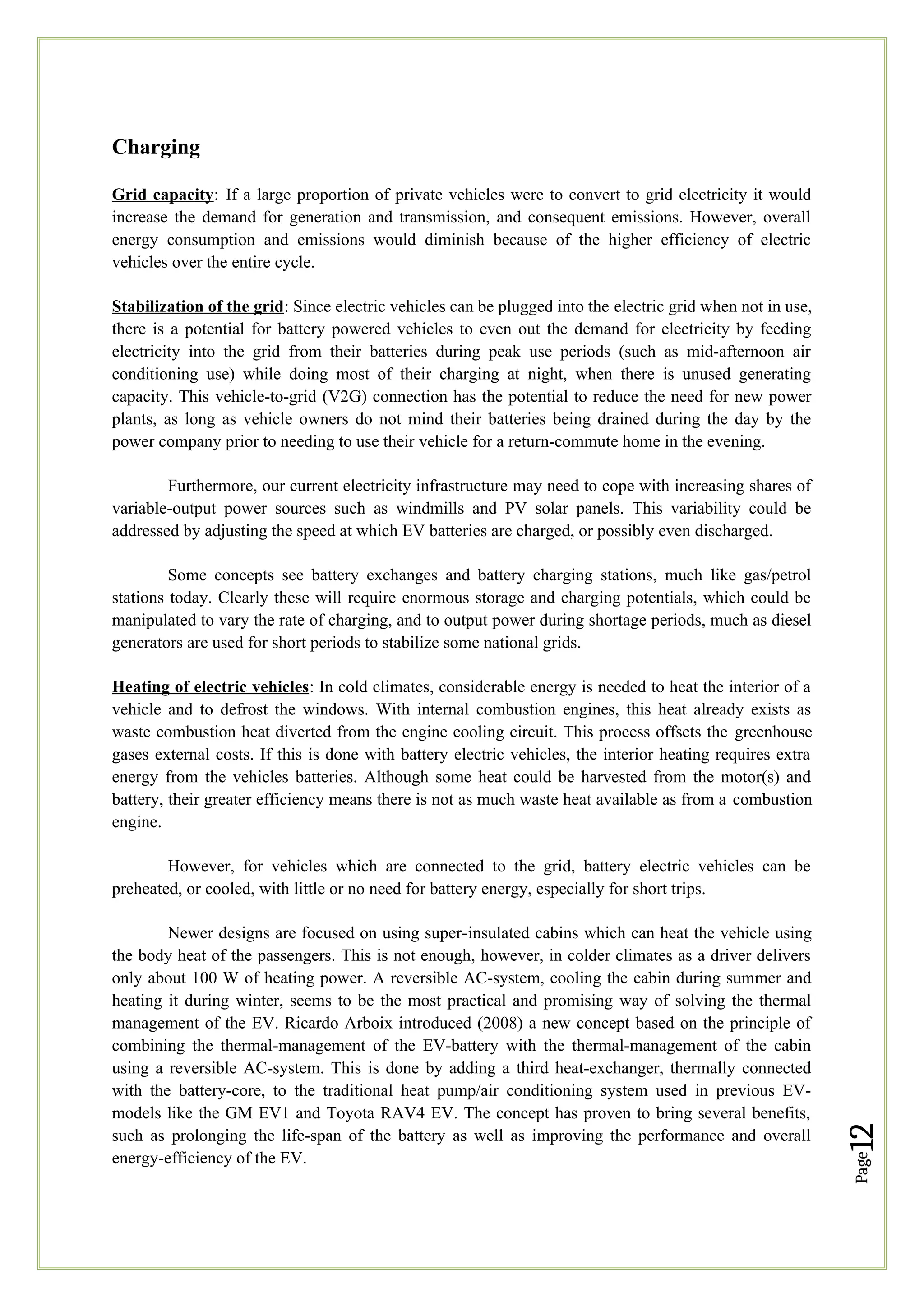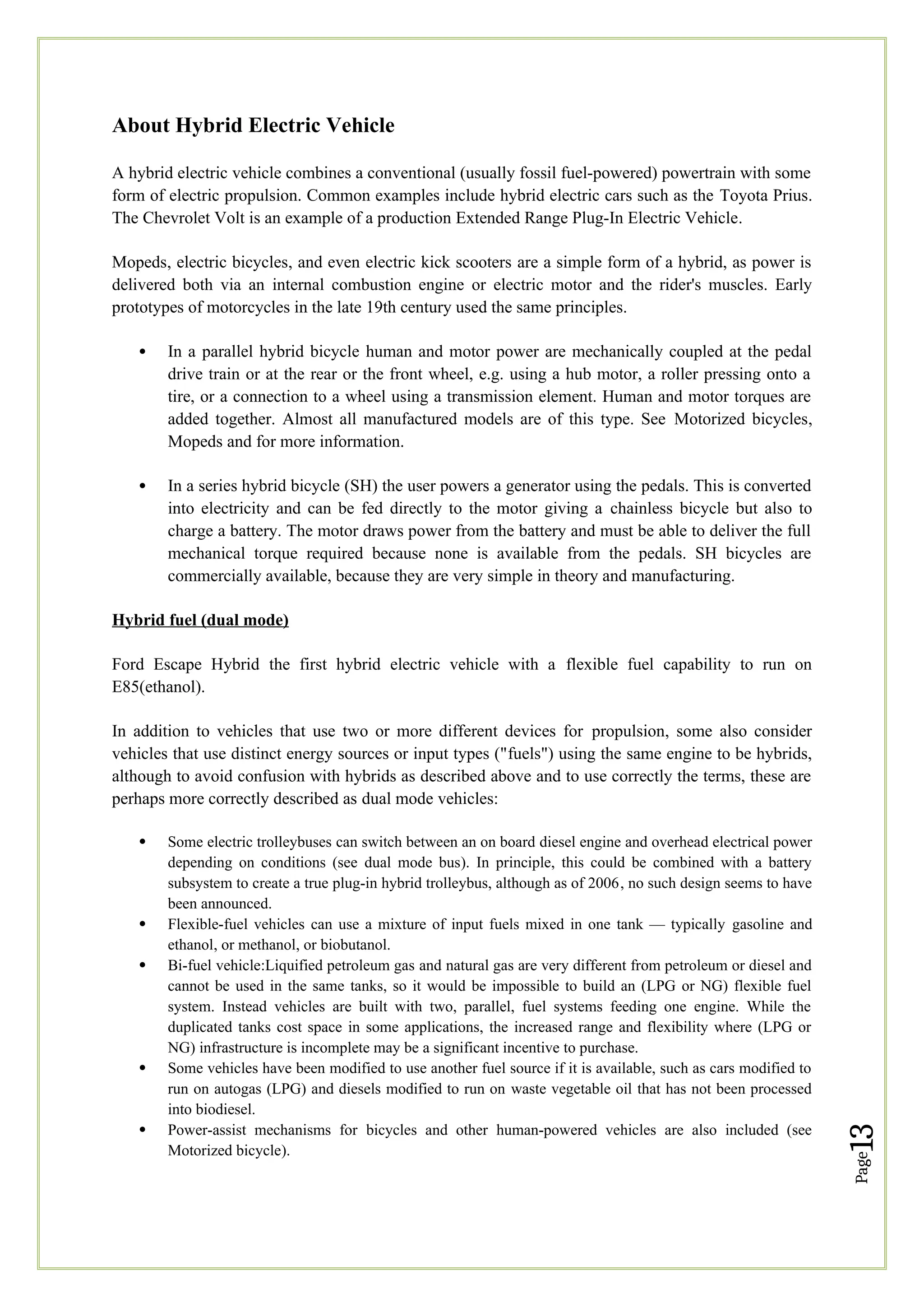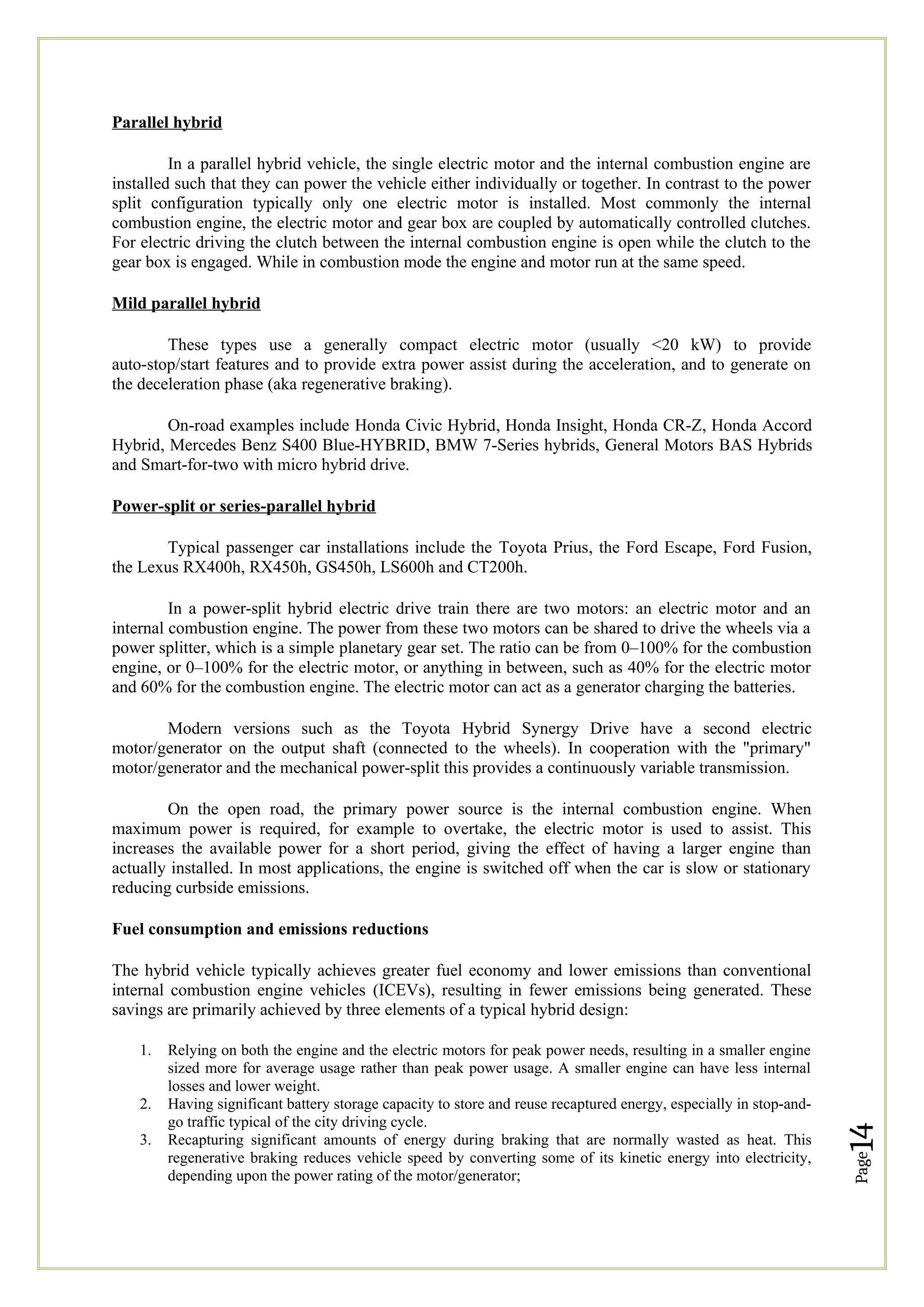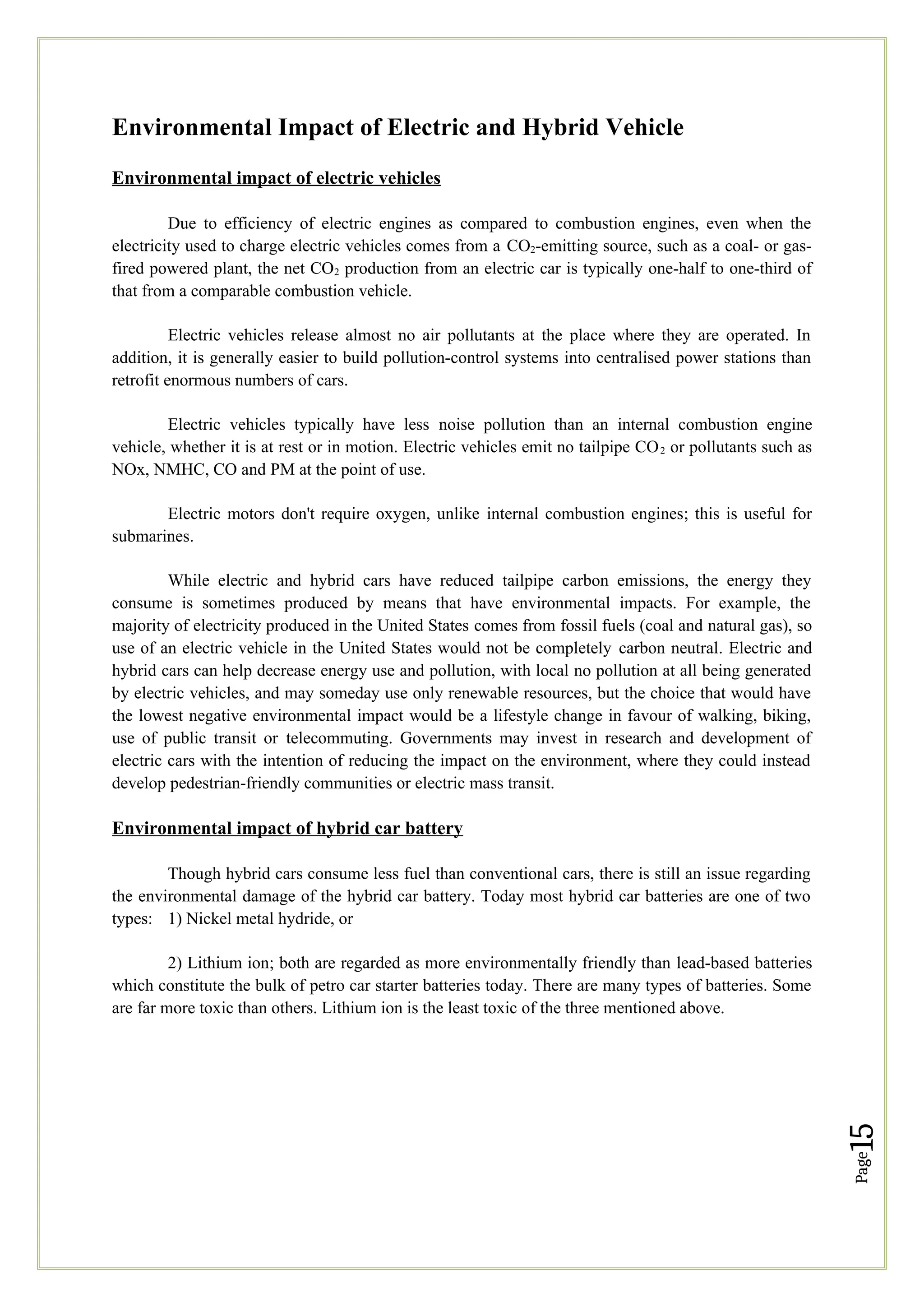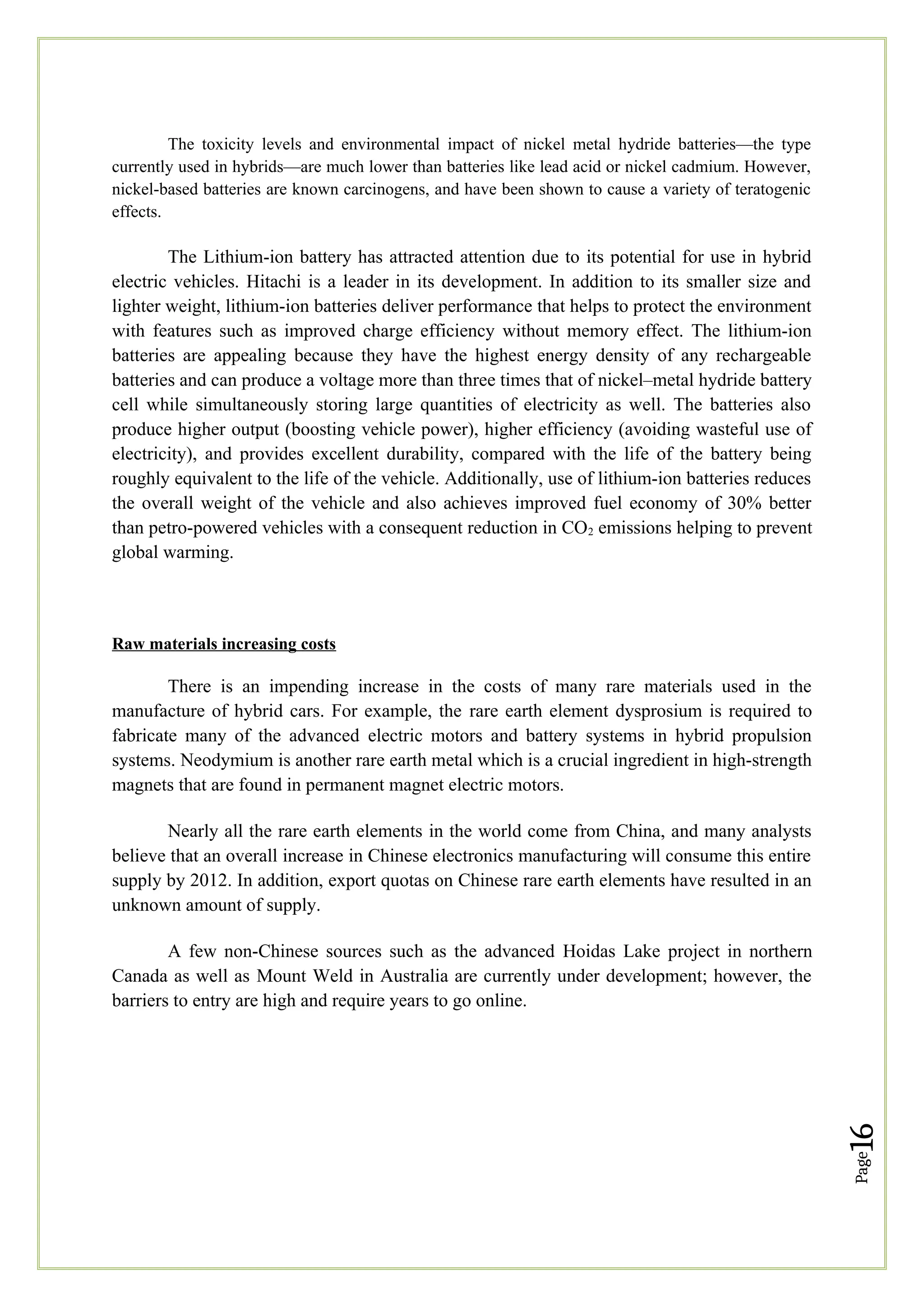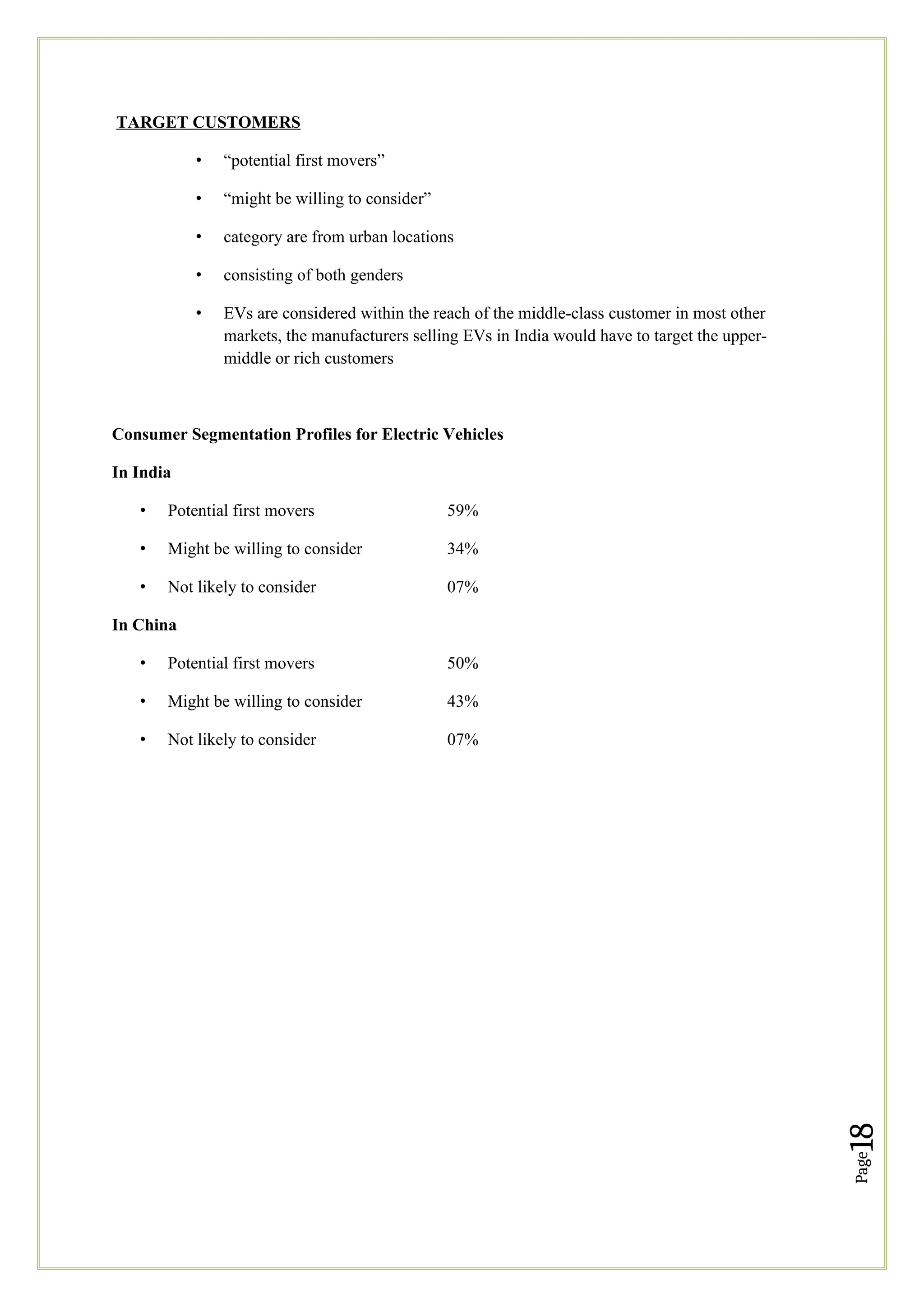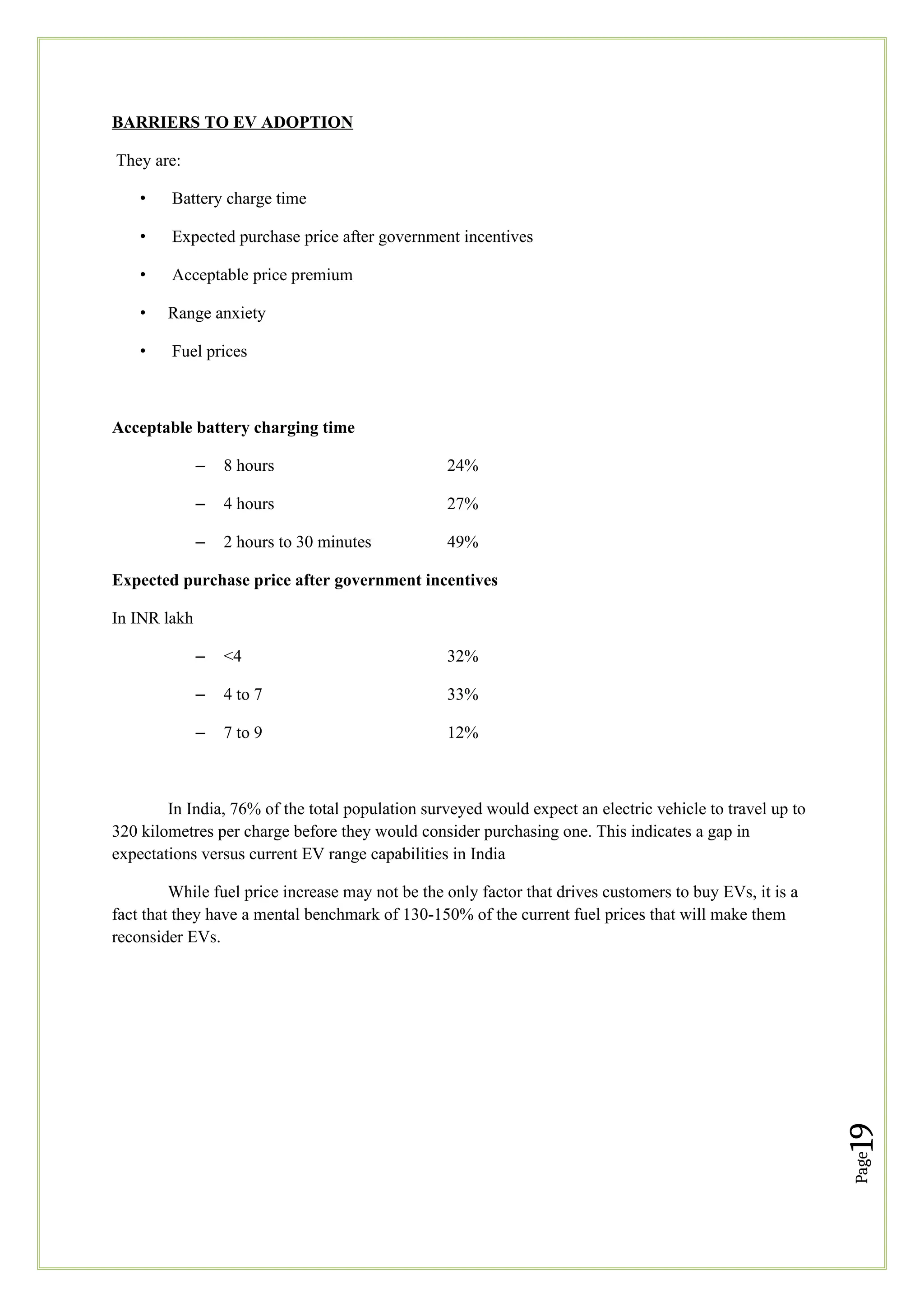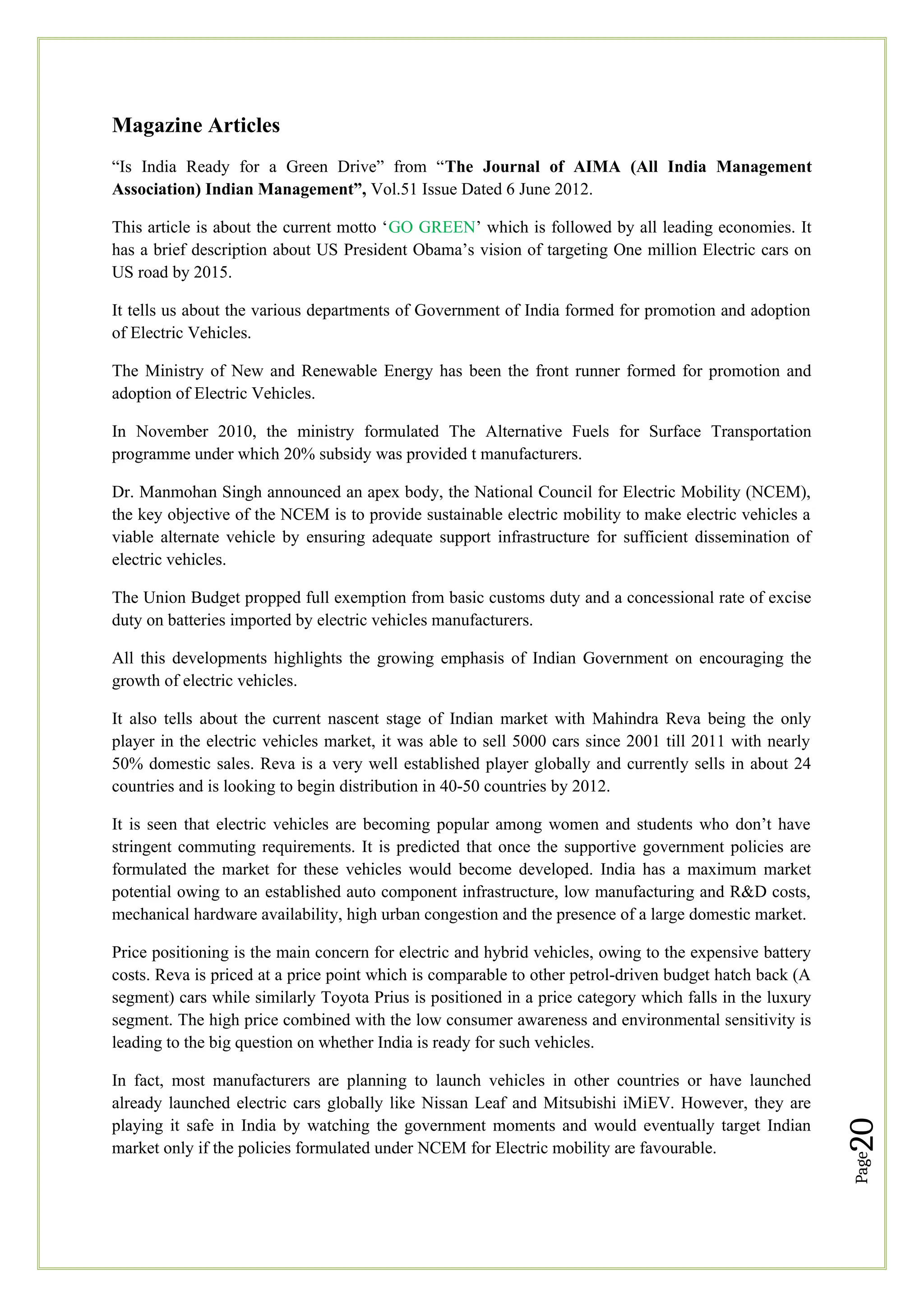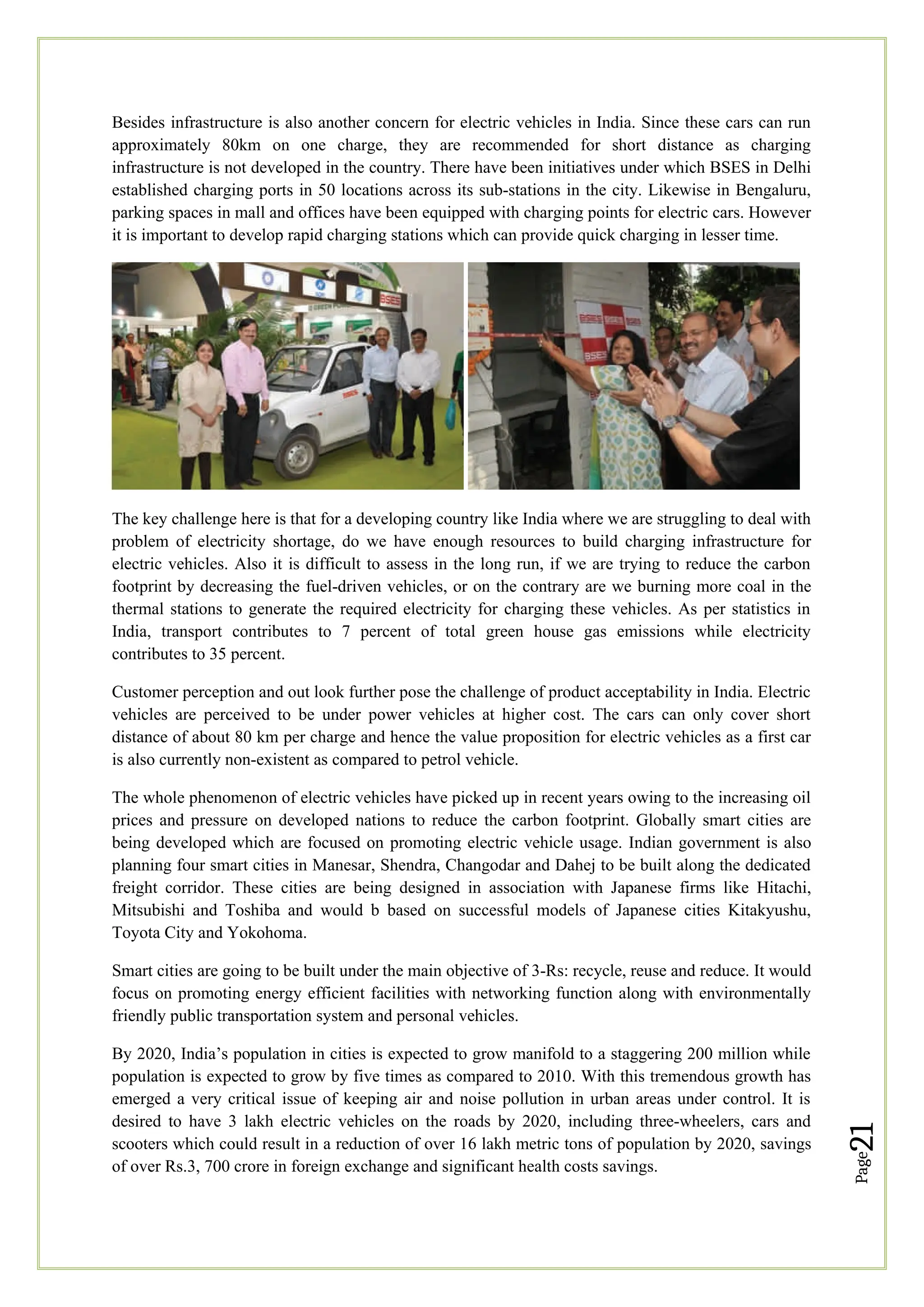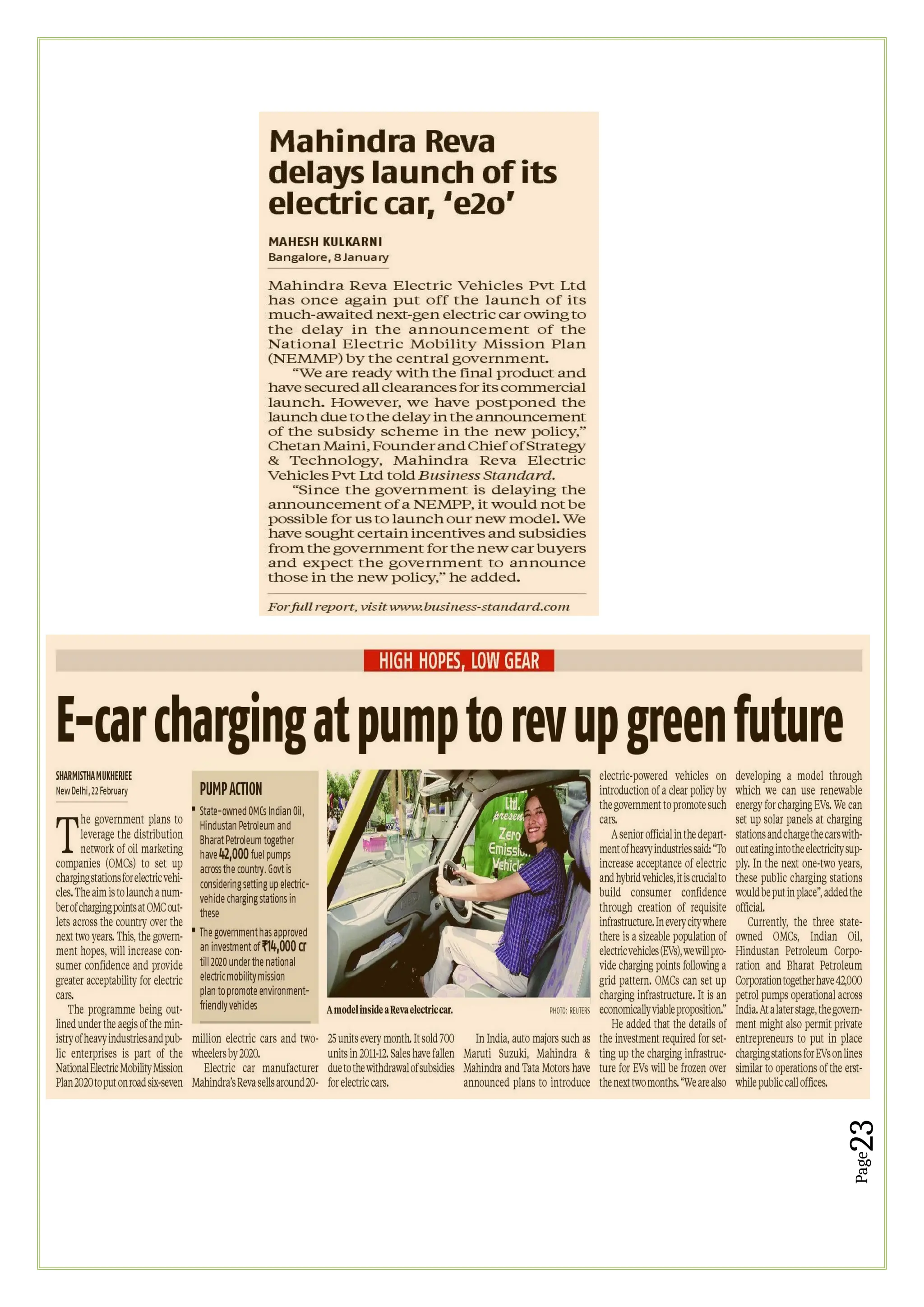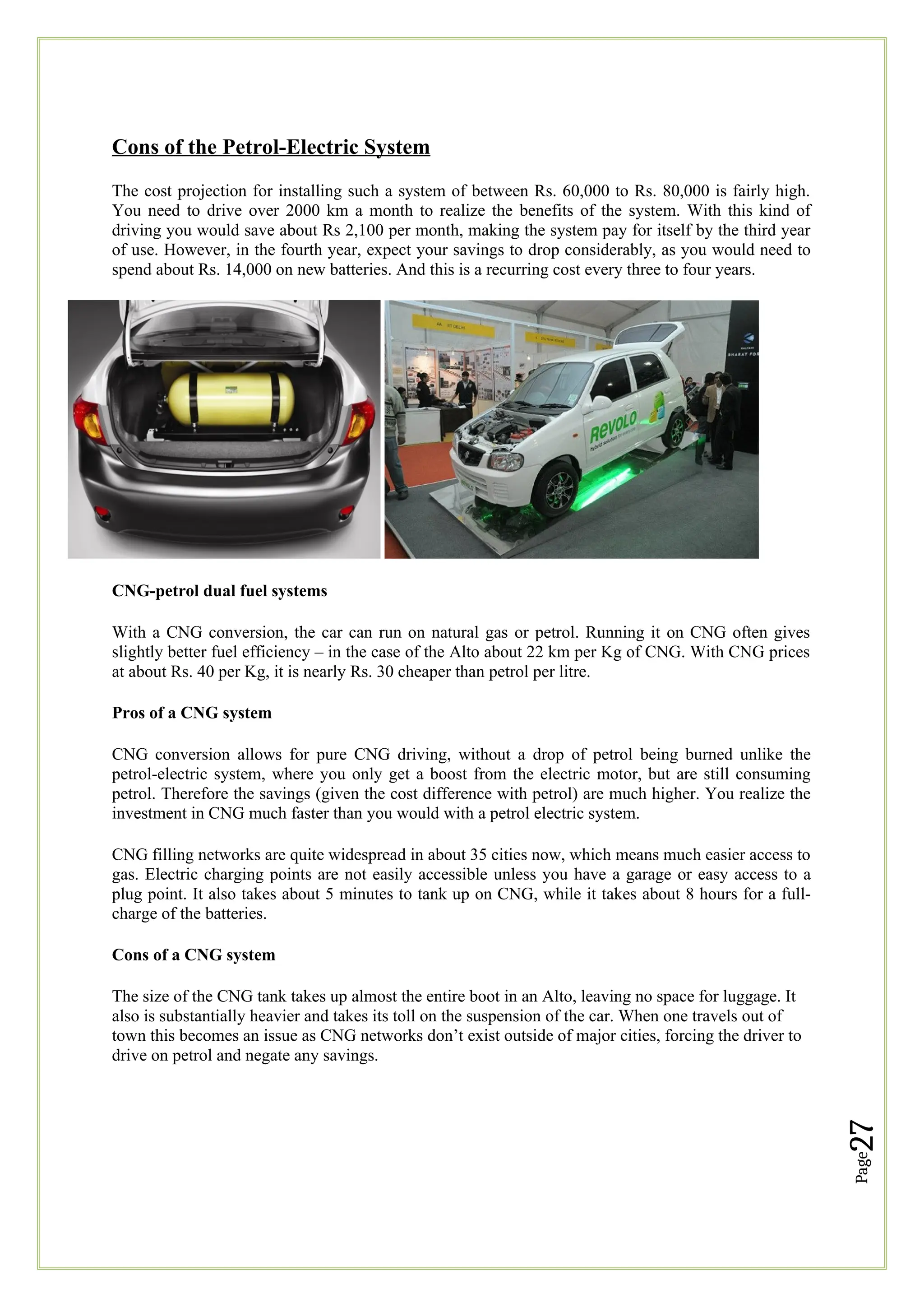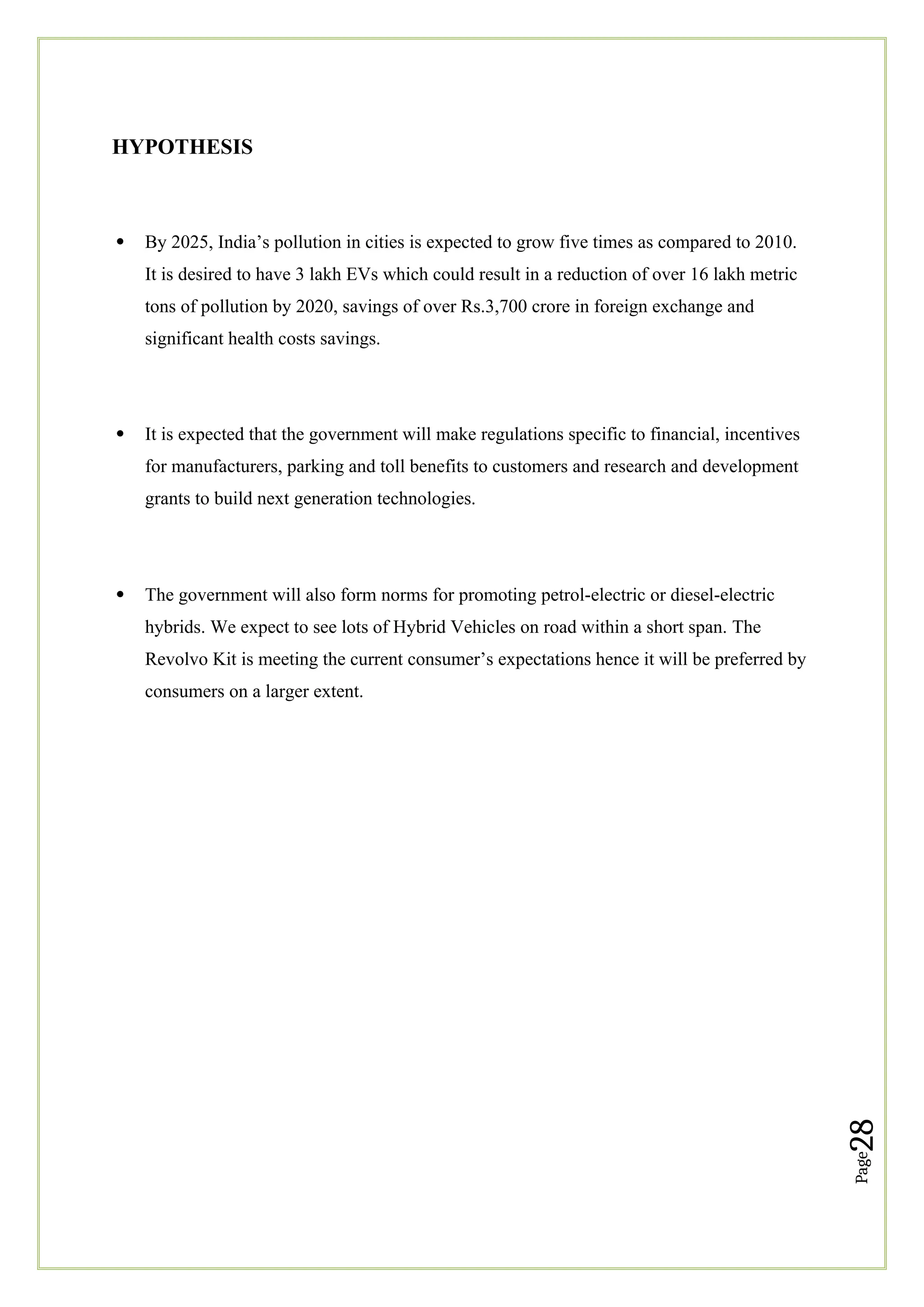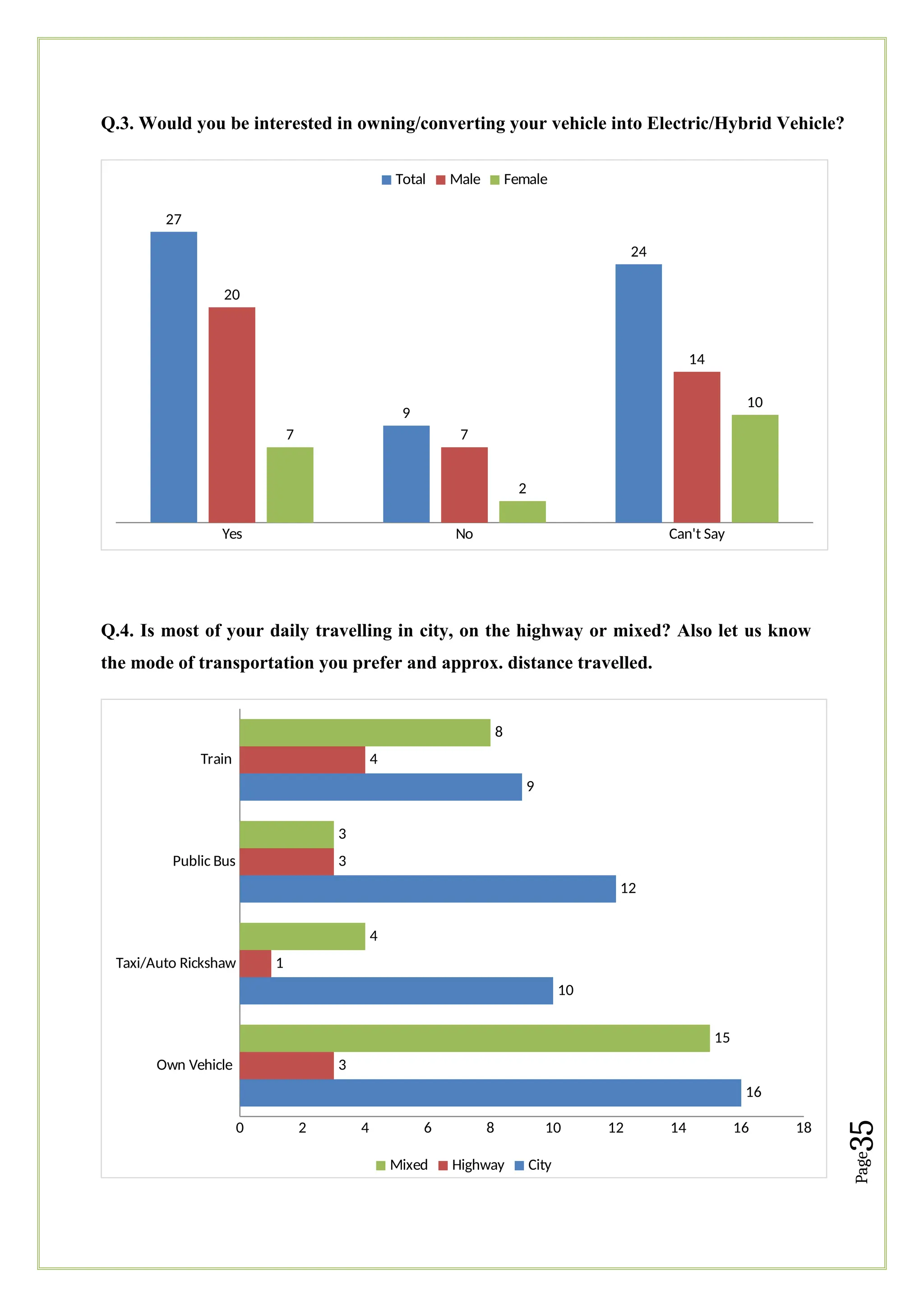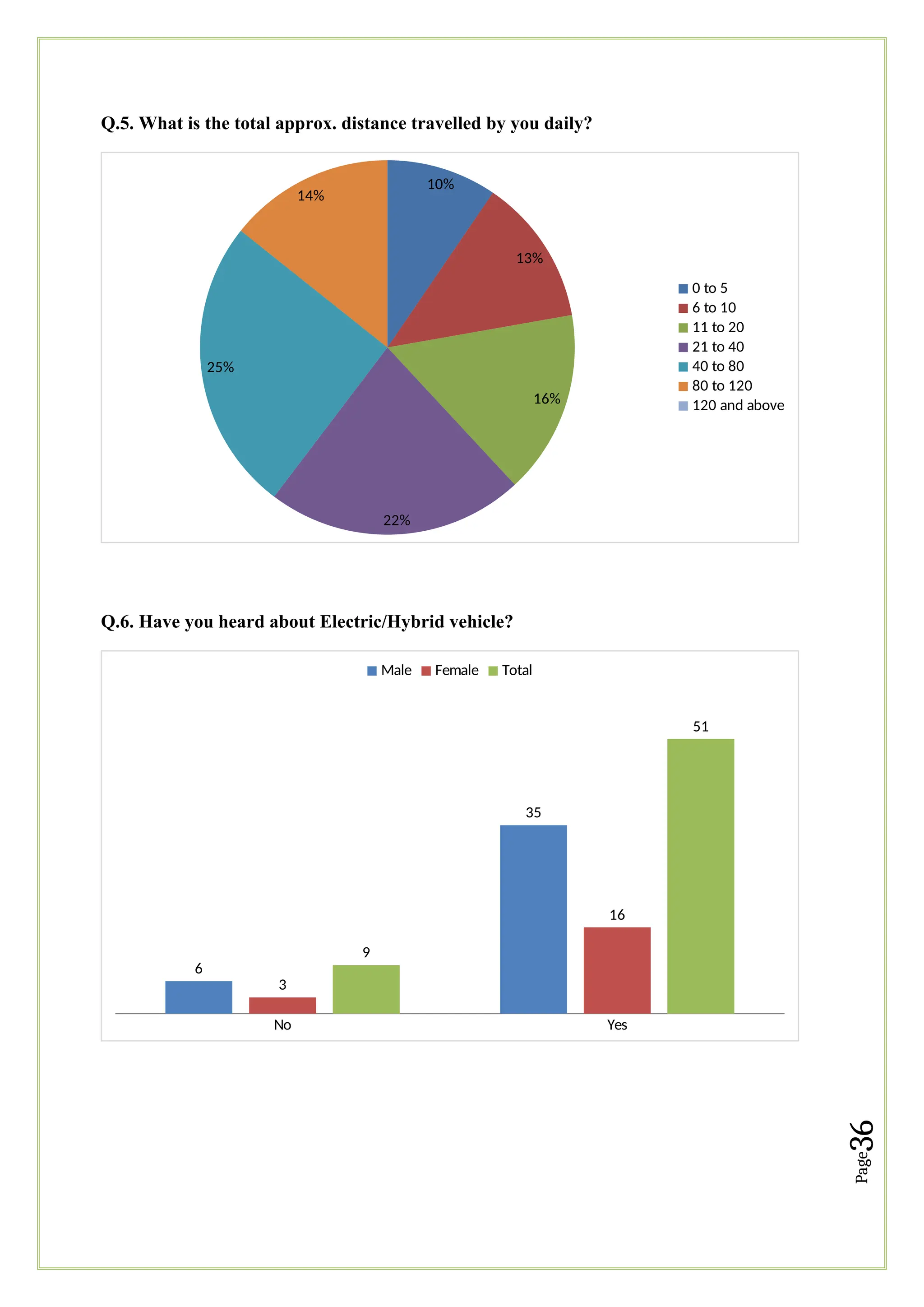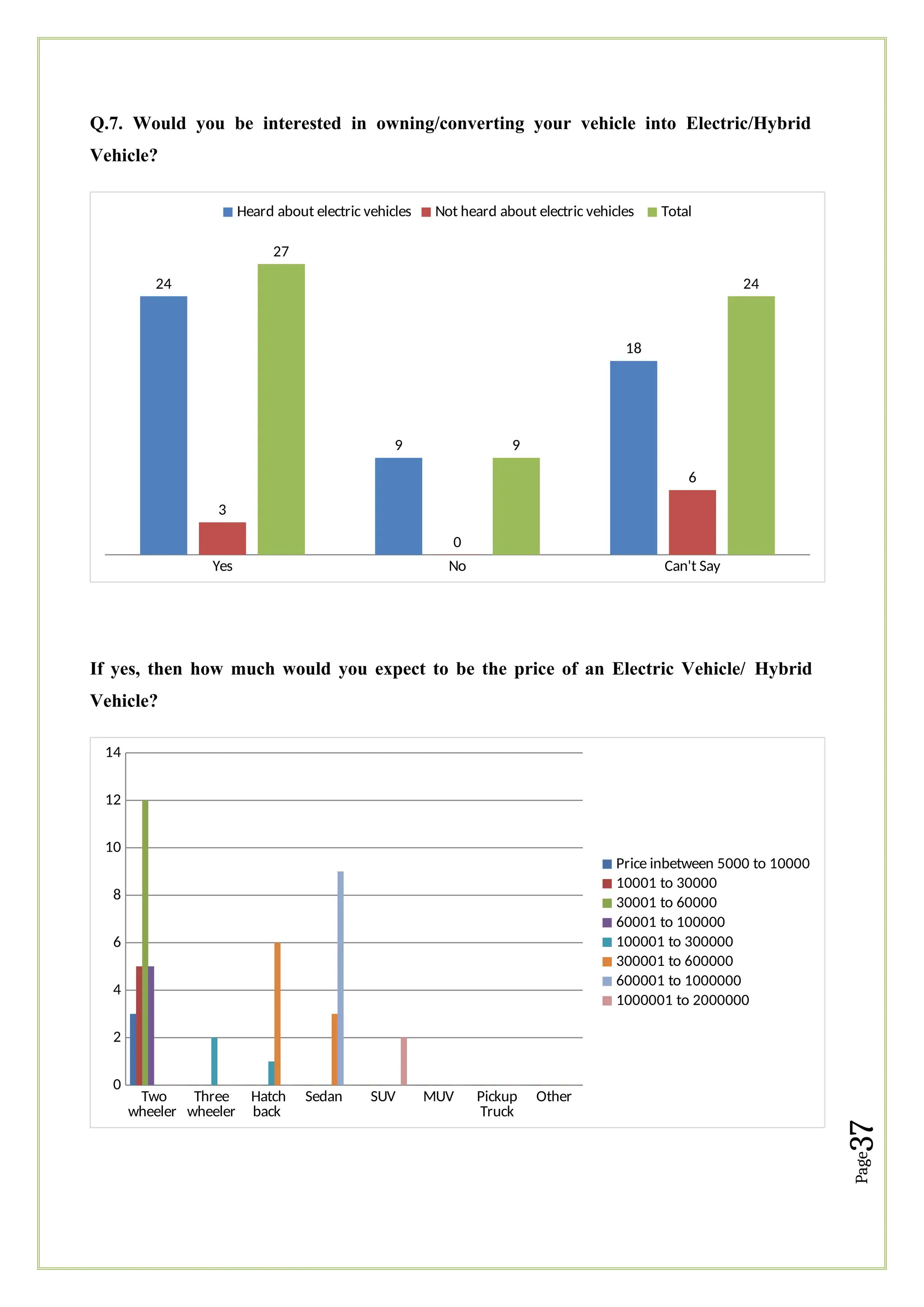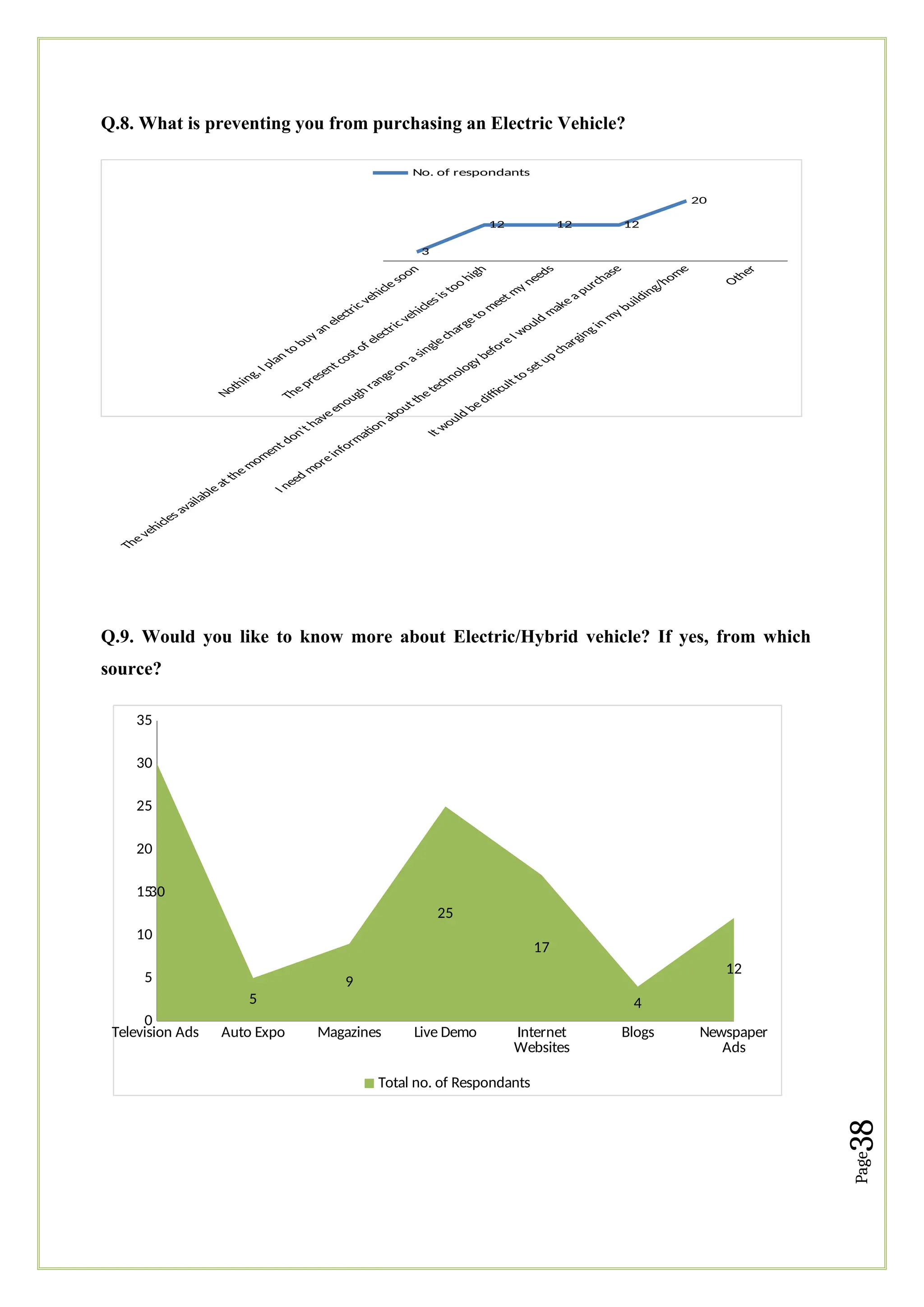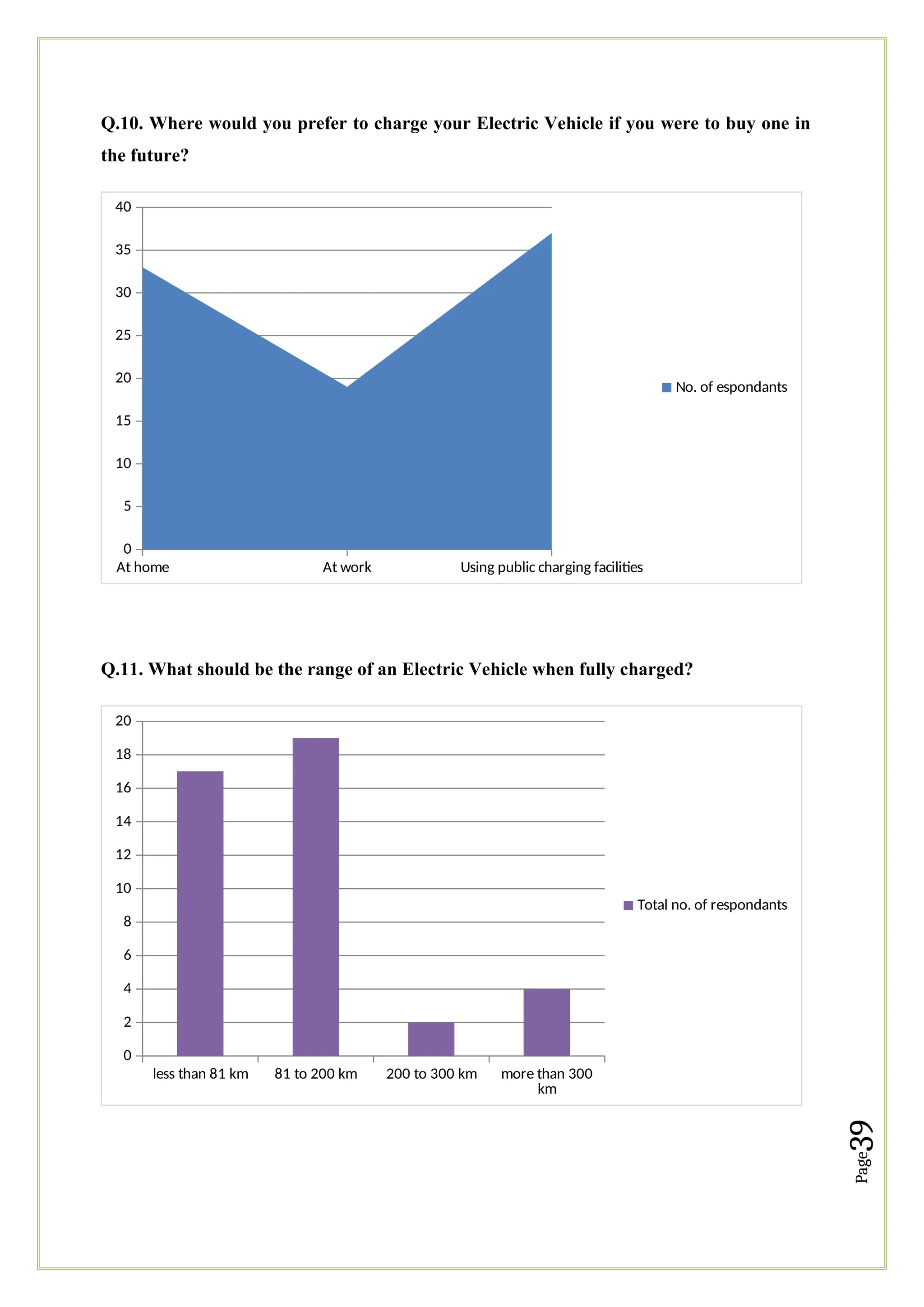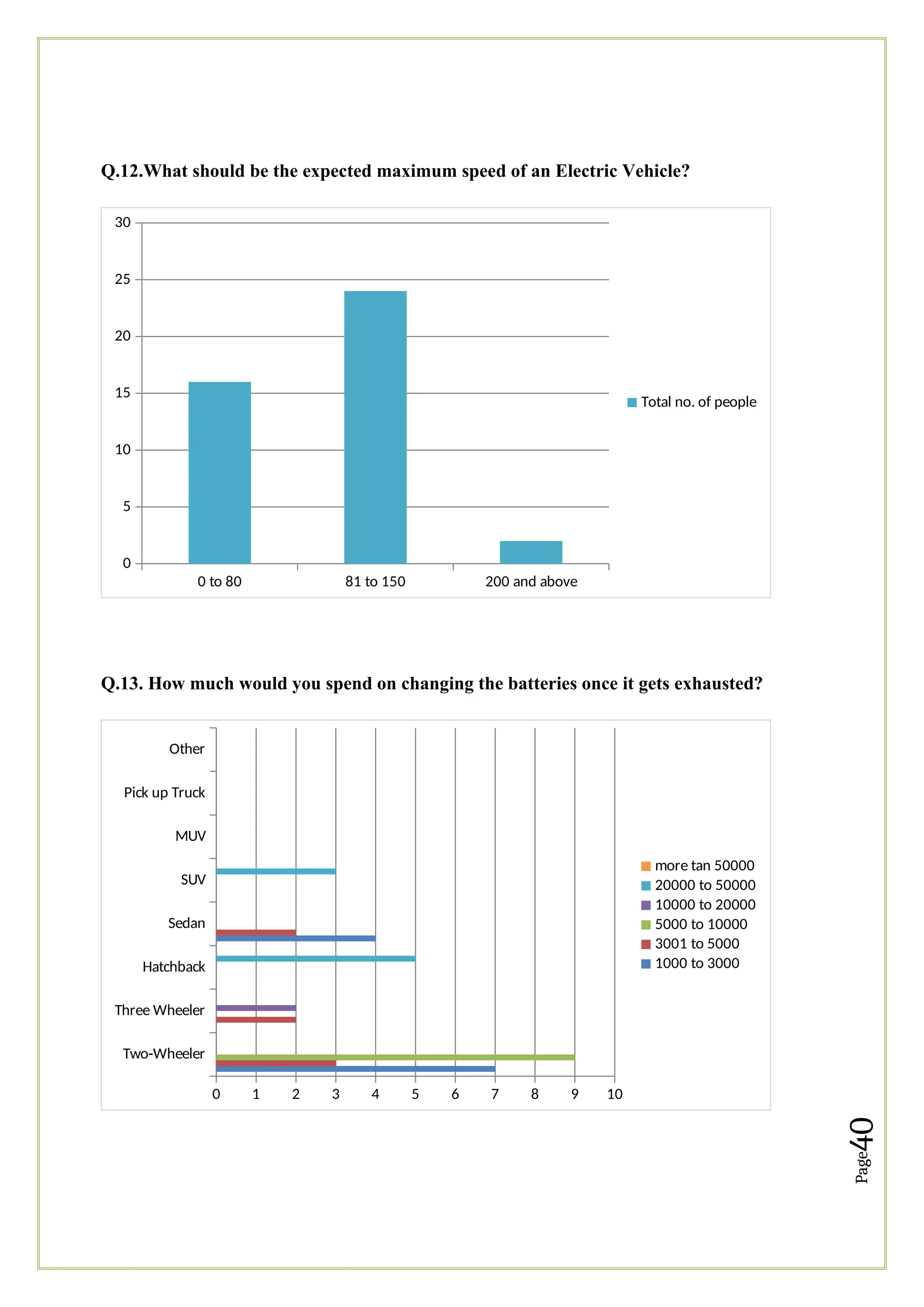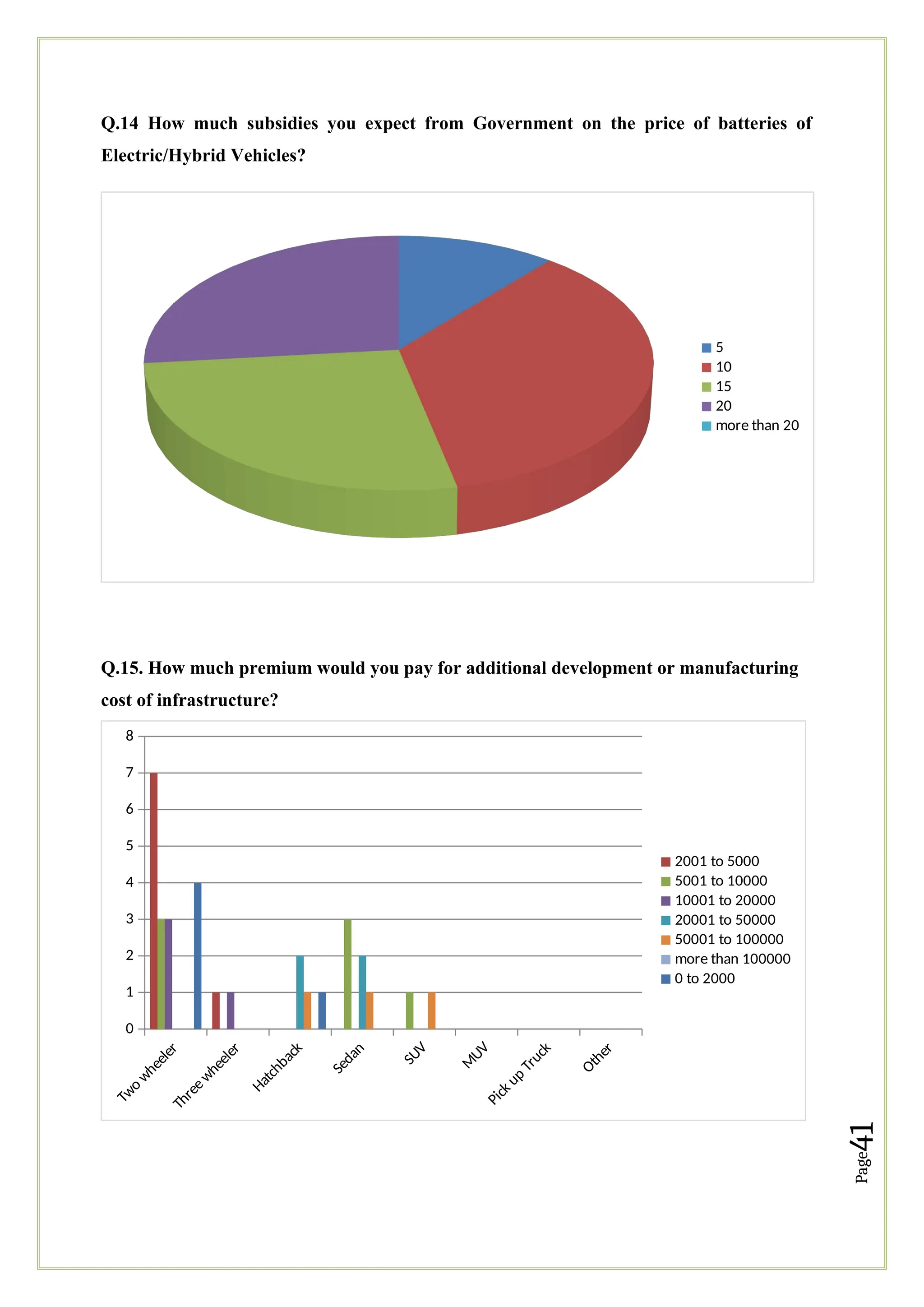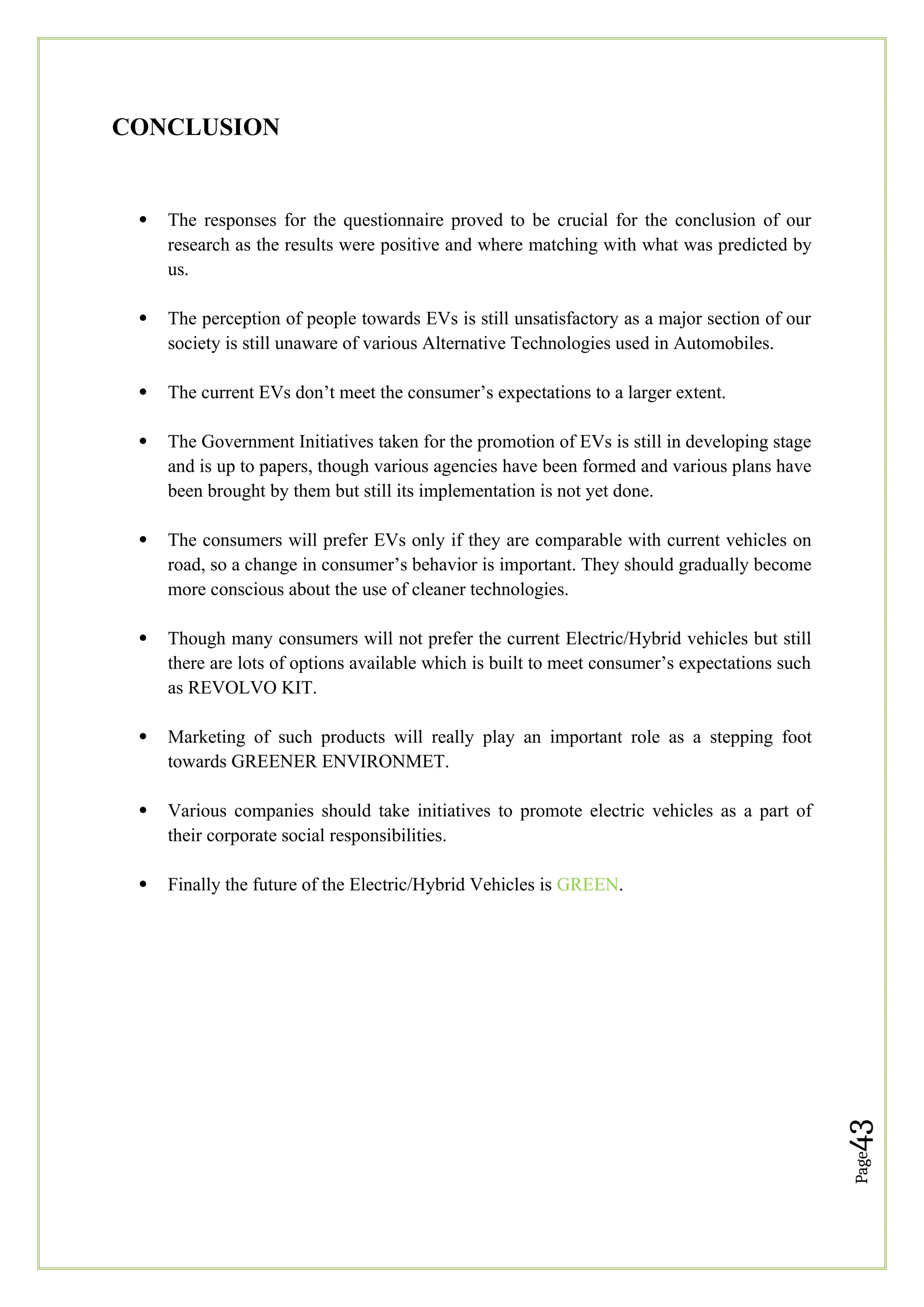Introduction• History • Importance of Electric vehicle• Architecture of Electric Vehicle• Various parts of Electric vehicle• Working of Electric vehicle• Types of EVs : 1) Hybrid electric cars2) Battery Electric cars• Electric cars in India • Life span of electric cars • Advantages & Disadvantages of EVs• Positive outcomes on environment • ConclusionINTRODUCTION :-• Electric vehicle are automobile, which are powered by the electric engine and electric engine.• The development of the electric vehicle is a very perspective important process. • EV’s are vehicle that are powered by an electric motor instead of an internal combustion engine.History :-• The history of the EV’s began in the mid-19thcentury.• 1832: Robert Anderson invents a non-rechargeable electric carriage .• 1835: Thomas Davenport builds the first practical Electric vehicle. • 1976: General Electric was chosen to construct a parallel-hybrid sedan, and Toyota built its first hybrid car.GERMAN ELECTRIC CAR, 1904.The Importance of Electric vehicle :-• Electricity is cheaper than gas. • Electricity can come from renewable resources such as solar and wind power.• Electric cars pollute less than gas-powered cars.• Electric cars are much more reliable and require less maintenance than gas-powered cars. • Cheapness in amount of fuel consumed .• Help to reduce greenhouse emission. Architecture of electric vehicle:-Parts of electric vehicle :-• Battery• Charger• Power controller • Electric Motor: 1) Ac Motor • Clutch• Transmission driveshaft• Wheels WORKING:-• The driver presses the accelerator which in turn sends the signals to the controller.• When fully accelerated, maximum voltage to the motor.• On releasing the accelerator, no voltage is supplied.• Two potentiometer are connected.• When both potentiometer shows same deviation , voltage is supplied further and car moves.TYPE OF ELECTRIC CARS:-• HYBRID ELECTRIC CAR • Uses a small electric battery to support the internal combustion engine.• Provide increased fuel efficiency.• Battery is recharge by both gasoline engine and regenerative braking.• Regenerative braking captures kinetic energy to charge the batteries when the driver push the brakes. • BATTERY ELECTRIC CARS:• Battery electrical vehicles all electric.• No internal combustion engine.• needs large recharge time (7-8 hours). • Car halts when the battery dies.• In order to run 80 plus miles, it requires a large battery that is, 18kWH to 36kWH. ELECTRIC CARS IN INDIA:-• Companies like Mahindra, Toyota have launched electric cars in India.• Mahindra launched the first model of EV Reva back in the late 1990s.• However efforts have been made to improve the power and luxury of the car.• In November 2011, Reva NXR was launched which could run 160 km when fully charged.LIFE SPAN OF ELECTRIC CARS:-• Different type of electric cars have different life spans.• Battery EVs can run for 5 years or 1,00,000 miles before disintegrated.• The hybrid electric cars have longer life span due to continuous
